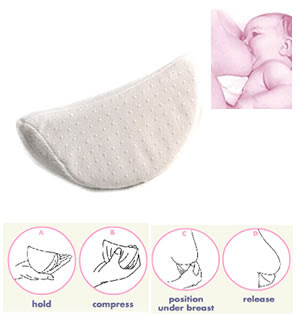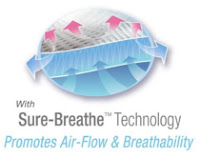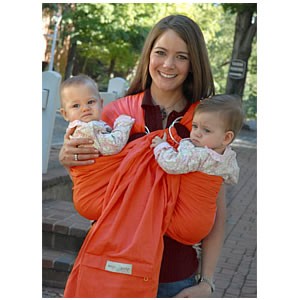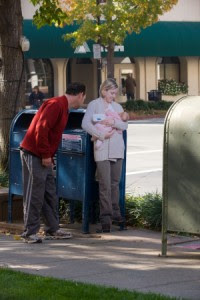Don't miss this chance to ask three local pediatricians anything as you prepare for your newborn. Expectant parent's questions will guide the discussion.
Hollywood: Tues. Aug. 9th, 2011 @ 6:30 - 8:00pm Santa Monica: Thurs. Aug. 25th, 2011 @ 6:30 - 8:00pm Westlake: Wed. Sept. 14th, 2011 @ 6:30 - 8:00pm
Here are some possible topics:
- Well baby care: what is the schedule?
- How will I know if my baby is sick?
- When should I call the doctor?
- Which thermometer is best to use?
- Normal Baby Behaviors (hiccups, sneezing, burping)
- Skin care-rashes, wipes, diaper cream, lotion, powder
- What is colic and can it be prevented?
- When might my baby sleep more?
- Blocked tear ducts
- Whooping cough epidemic (Pertussis)
- Vitamin D supplement
- Vaccines
Snack will be served and don't miss out on our Grand Prize Drawing!
$10 per couple. Space is limited to 14 couples. Register today by calling
Our Pediatrician PanelPeter Antall, M.D.
(Teaching in Westlake Village)
Peter Antall is a general pediatrician and a partner at Conejo Children’s Medical Group in Thousand Oaks. Peter grew up in both Cleveland, Ohio and Boston, MA. He attended George Washington University School of Medicine, completed his residency at Rainbow Babies and Children’s Hospital in Cleveland, and then completed one year of fellowship in Pediatric Hematology and Oncology at Stanford University. Peter is a full time practicing general pediatrician but has many other professional interests. Peter has been chief of pediatrics at Los Robles Hospital, he has created and currently manages the ER pediatrician program at Los Robles, and he has developed a smartphone app called Pocket Pediatrician. Peter is also the Pediatric Medical Director at Specialists On Call, a telemedicine company based in Westlake Village. Peter is an avid bicyclist and lives in Westlake Village with his wife, three daughters, and a multitude of pets.
Dr. Carla Tahan
(Teaching in Westlake Village)
Dr. Carla Tahan is a Board Certified Pediatrician and member of the AAP who has been practicing general pediatrics for 17 years. She received her Bachelor of Science degree in Biology from UCLA and pursued graduate studies in Public Health with an emphasis in health education. She also spent some time teaching in the Los Angeles and Fresno Unified School Districts. She went on to get her medical degree from George Washington University and completed her pediatric residency at Children’s Hospital Los Angeles. In 1999, Dr. Tahan started her own private practice in Oak Park in association with Dr. Andrew Matthew. She currently lives in West Hills with her husband and her two children, Michael (10 yrs) and Christina (8 yrs).
 Cara Natterson, MD
Cara Natterson, MD (Teaching in Santa Monica)
Cara Natterson, MD is a board certified pediatrician and member of the AAP. She was in practice at 10th Street Pediatrics for many years before moving on to a career in writing and consulting. Cara has published three health and parenting books, the most recent of which came out this past October. She is a blogger on sites such as HuffingtonPost.com and Intent.com, and she has appeared as an expert on TV, print, online, and speaking engagements. In her consulting practice, Worry Proof Consulting, Cara works with parents to review medical issues and wade though conflicting research or advice. She lives here in LA with her husband and two children.
 Dr. Sonya Sethi Gohill
Dr. Sonya Sethi Gohill (Teaching in Santa Monica)
Dr. Sonya Sethi Gohill is the proud owner of Brentwood Pediatrics, a small private pediatrics office in Brentwood. "Dr. Sonya" grew up in Los Angeles, and attended Stanford University, where she graduated with distinction. She then attended medical school at UCLA, and stayed there for residency. She has been in private practice since 2002, and opened her own office in June, 2010. She is also trained as a certified lactation educator. Dr. Sonya lives in Santa Monica with her husband and two sons, Dilan (5) and Jaiden (2).
 Tyler D. Krohn, MD, Santa Monica Pediatrics (Teaching in Santa Monica and Hollywood)
Tyler D. Krohn, MD, Santa Monica Pediatrics (Teaching in Santa Monica and Hollywood)Tyler D. Krohn, M.D. is currently a pediatrician at Santa Monica Pediatrics and an assistant clinical professor of pediatrics at the David Geffen School of Medicine at the University of California, Los Angeles. His partners include renowned pediatricians Marshall Sachs, Dennis Woo, Sharon Kaminker, and Chiaki Jutabha and their group is one of the oldest and most well-respected pediatrics practices on the Westside of Los Angeles. After graduating magna cum laude from Vanderbilt University with a Bachelor of Science degree in Interdisciplinary Studies and a focus on biomedical science and health care studies, he moved to Los Angeles where he received his Medical Doctorate from the Keck School of Medicine at the University of Southern California. He then began his career in pediatrics doing his internship and residency training at Childrens Hospital Los Angeles, which has been ranked as one of the top 10 children’s hospitals in the United States and the best children’s hospital on the West Coast (Source: US News & World Report). He has spent time in the leadership of the American Academy of Pediatrics and has conducted research in the area of cystic fibrosis, which is an area of particular interest to him. He and his wife live in Brentwood with their two Cavalier King Charles Spaniels, Henry and Jack, and they are currently expecting their first child.
 Rachel J. Kramer, M.D., CLE
Rachel J. Kramer, M.D., CLE (Teaching in Hollywood)
The Pediatric Group Beverly Hills
A native of Los Angeles, Rachel Kramer is a Board Certified Pediatrician in private practice. She and her partners, Jerry Whitman, M.D., and Monique Araya, M.D., are one of the most well established pediatric offices in Beverly Hills. After completing her undergraduate education at UCLA, Rachel traveled to Israel where she completed her medical school studies at the University of Tel Aviv, graduating at the top of her class. In 2001, Rachel returned to Los Angeles to complete her General Pediatrics residency training at Cedars-Sinai Medical Center, where she was awarded Resident of the Year for her excellence in patient care, and the Neonatology Award for superior knowledge in the field of newborn medicine. During her residency, Rachel realized the great need in the community for breastfeeding knowledge amongst medical professionals. She created the lactation elective for pediatric residents at Cedars-Sinai, one which continues to this day. After completing her residency, Rachel received formal training in lactation through UCLA and became a Certified Lactation Educator. She is among a small handful of Southern California physicians who have this certification. Rachel is on staff at Cedars-Sinai Medical Center, where she is active in leadership in the Department of Pediatrics. She lives with her husband and three adorable daughters, ages 7, 4 and 1 in Los Angeles.

(Teaching in Hollywood)
Premier Pediatrics Beverly Hills
Lisa Hauselman, MD, is a pediatrician and partner at Premier Pediatrics Beverly Hills. Born and raised in Los Angeles, Lisa attended the University of Pennsylvania before returning home to begin her medical education. She attended medical school at UCLA School of Medicine graduating with honors, and then completed her residency in Pediatrics at Cedars Sinai Medical Center. Lisa lives with her husband and two children: Sophie (6) and Moses (3).
































